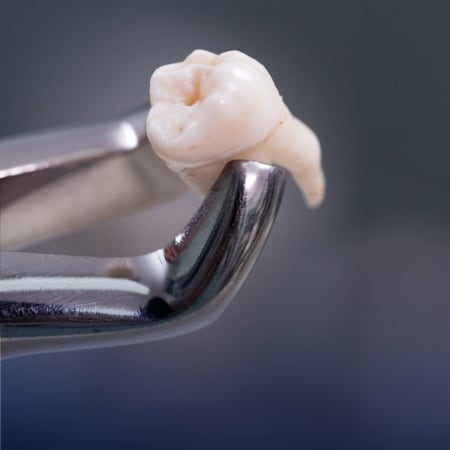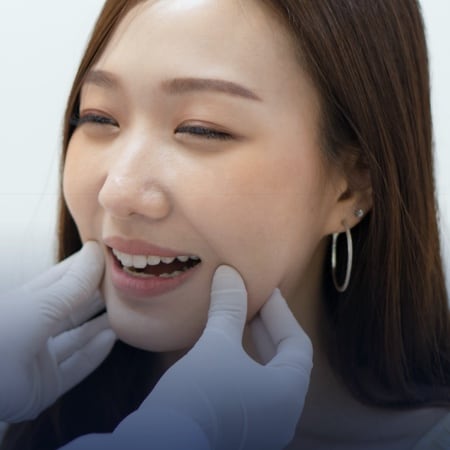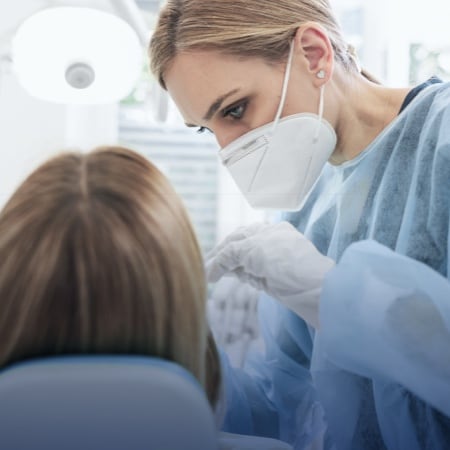The covid-19 pandemic hit our communities hard and fast.
Within the dental industry, most practices only had a couple of days to close their doors in compliance with RCDSO recommendations.
While I praise our governments for taking action to support our practices, our employees, and our patients, the effects of this shutdown will be felt for some time yet.
Of course, this, too, shall pass.
The more important question that should be on every practice owner’s mind is: when you are once again able to open your doors to patients, will you be prepared?
No, I am not referring to PPE or air filtration systems. I am talking about the one critical factor your practice will need proficiency in before any of that other stuff matters….
CASH FLOW!
Dental practices are small businesses and, in the world of business, your ability to manage your cash inflows and outflows can be the difference between your practice surviving or shutting its doors for good.
Why Cash flow and not Profit Should Be Your Focus
When you first opened your practice, you likely accounted for every single cent that was spent.
However, over time and with success, more mature practices begin focusing on profit…assuming their sources of cash inflow are secure and no longer needing daily attention.
It is critical to your practice’s survival to understand the difference between profit and cash flow and why your focus must be on the latter.
Profit, or the difference between your revenues and expenses, is based on a set of accounting rules and can be somewhat arbitrary depending on which method your bookkeeper or accountant uses to match revenues to associated expenses.
Profit is also affected by non-cash expenses such as amortization and depreciation and bad debt expense.
Profit is also taxed.
Cash flow, however, is based on the actual operating and financial health of your practice.
Cash flow dictates your ability to pay your employees, purchase supplies, and service your long-term debt.
Cash flow is not taxed.
It is possible to show a profit, while having negative cash flow. It is also possible to show a loss while having a substantial cash balance in the bank.
The first step in ensuring your practice can get back on its feet and ramp up once permitted is to not confuse these two concepts by making sure you know how much cash you need to operate on a monthly basis, how much cash you may expect to bring in from providing patient services, and what gap exists that you may need to debt finance via government program or your financial institution.
Major Strains on Practice Cash Flow
Your cash flow consists of two directions, inflow (from patients) and outflow (to vendors, landlord, banks).
Insufficient inflow and excessive outflow can both be sources of strain on your practice.
Common sources of strain include:
- Outstanding patient invoices
- Maintaining excessive inventories of supplies
- Failing to take advantage of seasonal trends in patient demand
- Over-investment in new technologies and capacity
- Low gross profit (the amount of each dollar of income earned that carries through to your bottom line)
- Low productivity
- Investing time and money in low- or no-value activities, as perceived by the patient
- Failing to differentiate between profit and cash flow
The second step in ensuring you have a healthy cash flow to support your re-opening is examining this list and asking yourself, “do these affect my practice’s cash flow?”
7 Areas to Improve Your Practice’s Cash Flow
Once you have critically assessed your practice’s sources of cash flow strain, it is time to develop strategies to alleviate them.
There are six common areas that any practice can investigate to improve their cash flow practices.
1. Patients’ Terms of Payment
While many patients will pay at the time of their completed appointment, this can vary based on the dentist, the patient’s circumstances, and the dental services provided.
Practices that find their accounts receivables (i.e. outstanding patient invoices) creeping upwards may benefit from adjusting their terms and methods of payment for patients whom they extend credit to.
Credit management also relates to this.
Many practices do not have a formal system in place for following up and collecting payments on outstanding accounts.
The more payments that are collected internally, the fewer that need to be turned over to your Collections agency, which saves you cash!
2. Costs, Expenses, & Systems
While this area may seem like a “no-brainer” for practices to review and improve, this must be done with caution.
The keys to reducing cash outflow related to expenses are to:
- Review your operating systems and protocols and simplify them where possible. Added steps mean added cost and complexity.
- Critically examine every discretionary expense and ask if it is truly necessary. For expenses meant to provide “value” to patients, find out if your patients actually value them like you think they do. Many practices expend a lot of cash unnecessarily on things they think their patients like, when in fact the patients don’t really care.
- Build systems where they do not exist but could. A system is simply a process that is formally documented so that each subsequent time this process is performed, it can be completed in accordance with the documented steps.Systems increase quality and consistency, while reducing wasted time and resources.
It is also very important to not fall into the “all costs are bad” trap.
Theoretically, in a market-based economy, all of your expenses are incurred so that you may maximize the quality of care you provide as well as the quantity of patients you provide it to.
In other words, each expense is an investment in your revenue generating ability and cutting the wrong expense could also result in a reduction of revenue. Choose wisely.
Ask yourself why you incur each expense. How does it provide value to your practice or to the patient? How does it contribute to your ability to provide high quality care?
3. Purchasing Practices
The busier your practice is, the more supplies you will consume.
Chances are, next to staffing costs, purchasing consumables represents one of your greatest sources of cash outflow.
Not effectively managing your purchasing practices can dramatically increase your consumable expenses.
If you purchase too little, you must purchase more often which can mean excessive and unnecessary delivery costs and missing out on volume discounts.
If you purchase too much, you may find your inventory expires before it can be used, leading to costly waste.
The first step in getting a handle on your purchasing practices is to begin tracking your rates of supply use and how much of your inventory expires and must be disposed of on a regular basis.
Also, investigate participating in purchasing groups. These consist of multiple practices combining their purchasing power to negotiate with vendors for better prices and volume discounts than any individual practice would receive on its own.
4. Inventory Management
Closely related to your purchasing practices is inventory management.
Once purchased items are received they go into your inventory.
A common mistake made by some practices is that staff simply unpack orders and place received supplies on the shelves where there is room.
However, this often means that newer items are placed at the front of the shelf.
The result is that these newer items, being more accessible, are used before the older inventory behind them leaving the older stock unused and set to expire.
Instead, practices should follow the “first in, first out” protocol, whereby older inventory is always moved to the front for first use and newer stock is stored behind it.
First in, first out ensures you will minimize waste (and subsequent unnecessary cash outflow) by minimizes the amount of inventory that expires.
Practices should also be carrying out a physical inventory count at least annually to ensure what you think is in your inventory is actually there! A 2018 ADA survey found that 49% of responding dental practices had experienced employee theft.
5. Capital Investments
Recently, CVOS Oral Surgery has made a number of investments in new imaging, telecommunications, and surgical technology.
I know for a fact that capital purchases in oral healthcare aren’t cheap, sometimes running into the hundreds of thousands of dollars.
Yet, many practitioners will purchase their capital equipment using their existing cash on hand (albeit in the bank).
However, using cash on hand to pay for large capital investments means that cash isn’t available to cover daily operating expenses such as payroll and rent.
While this not be an issue during “normal” times, the lesson to be taken from this pandemic is that “normal” is never guaranteed and when an economic shock occurs that negatively affects the dental industry, cash on hand (or “working capital”) is critical.
It is generally recommended that capital investments be financed over time via a financial institution or vendor program for a number of reasons:
- It will prevent you from depleting your cash balances.
- Financing allows you to time your cash payments (outflows) to be in alignment with actual consumption and effective life of the equipment.
- It provides you with greater flexibility regarding how you use your retained cash (e.g. keep it in the bank or invest in an instrument that earns interest to offset the cost of borrowing).
When the next economic shock hits in the future, and it will, having sufficient cash reserves to weather the storm may make the difference between keeping your doors open or having to shut down and smart capital management plays a role in this.
6. Business Financing
No one enjoys the feeling of being in debt, but sometimes taking additional debt on is the best thing for your business.
In addition to debt-financing capital equipment, it is also important that your practice have sufficient debt room to provide needed working capital, should it ever be needed.
The basic rule of business borrowing is that it is easier to do it when you don’t need to!
Many practices make the mistake of waiting until they are in financial trouble to approach their bank to borrow necessary funds.
However, at this stage, your practice represents a greater risk to the bank meaning that if they do approve you it will be at a higher interest rate (interest rates include a “risk premium” so the greater the risk, the higher the associated premium).
Of course, a higher interest rate means a higher cash outflow each month.
The best time to borrow is when your practice appears on paper to be as low risk as possible, which means asking for credit even if you have no immediate need.
In addition to timing, it is recommended that every practice/business have:
- An operating line of credit
- Overdraft protection
- Rewards-based credit cards
- Long and short-term debt room available
The future is uncertain, so it is best to always have a back up plan to sustain your cash requirements.
Happiness is a Positive Cash Flow
Practice owners experience the same sources of stress as all other small business owners and “cash” is usually at the top of that list.
However, being proactive and taking steps to maximize your cash inflows while minimizing cash outflows can go a long way to alleviating cash-related stress.
This starts with focusing on cash flow rather than profit.
It means having the necessary mechanisms in place to regularly track your cash position and the factors that drive it such as purchasing.
Lastly, it requires that you take steps during the “good times” to ensure you have a back up plan in place to preserve your working capital so that the effects of future economic shocks on your practice are mitigated.
Owning a practice can be a challenge at times, but not having sufficient cash to operate doesn’t need to be one of the challenges you face…take care of your cash flows and the rest will fall into place.
Written by Gavin Rouble, MA CPA CMA, Managing Director, CVOS Oral Surgery









